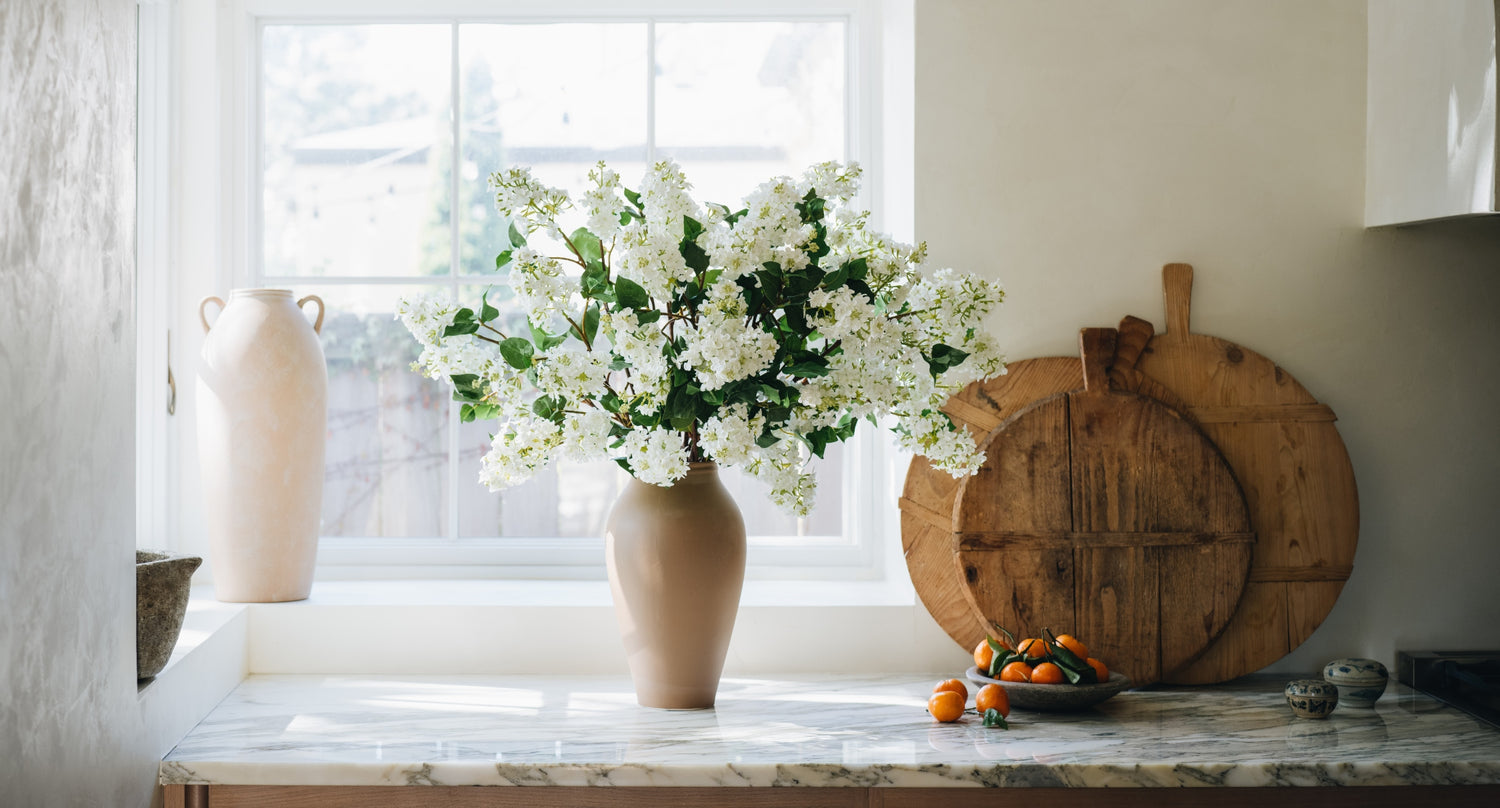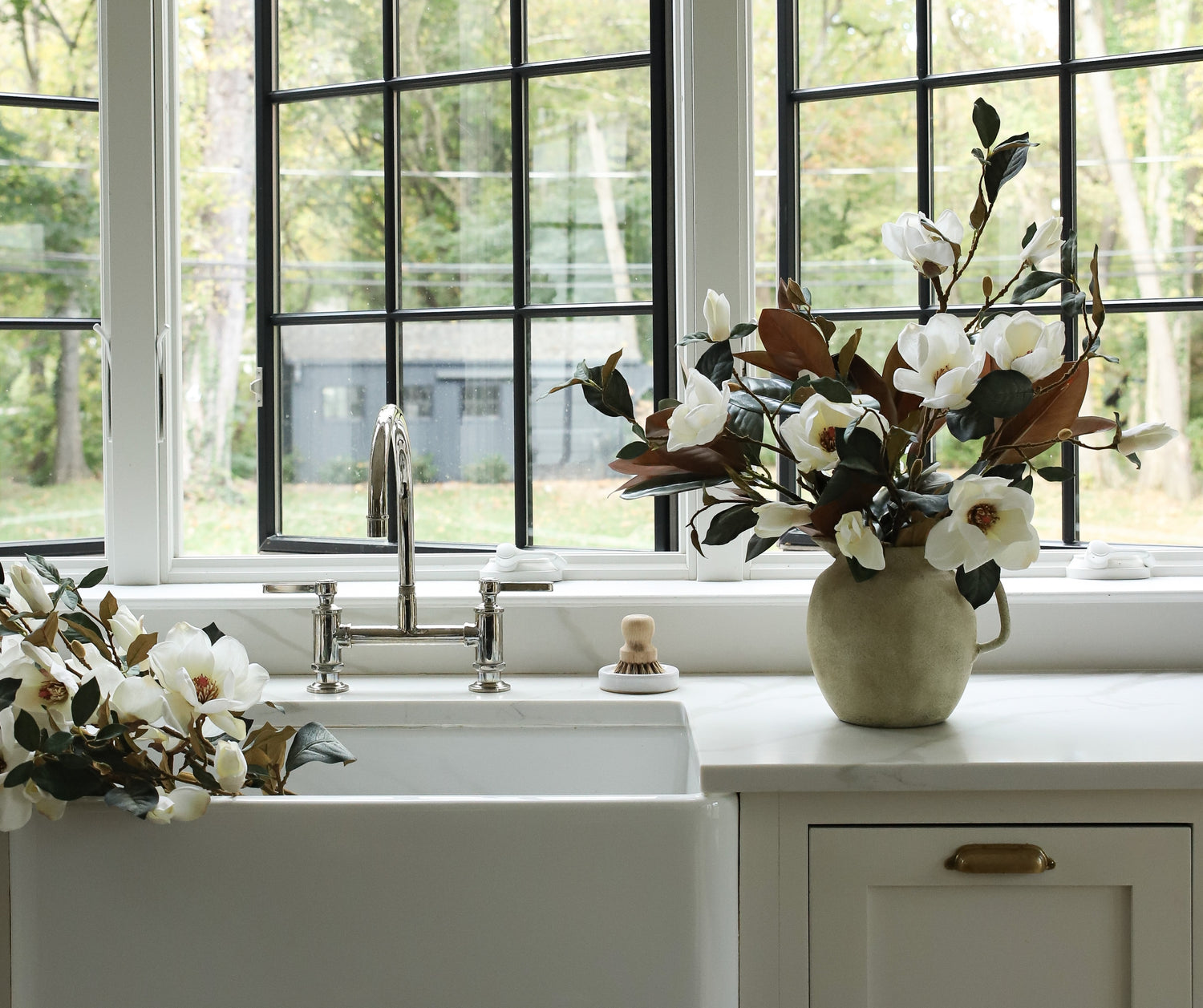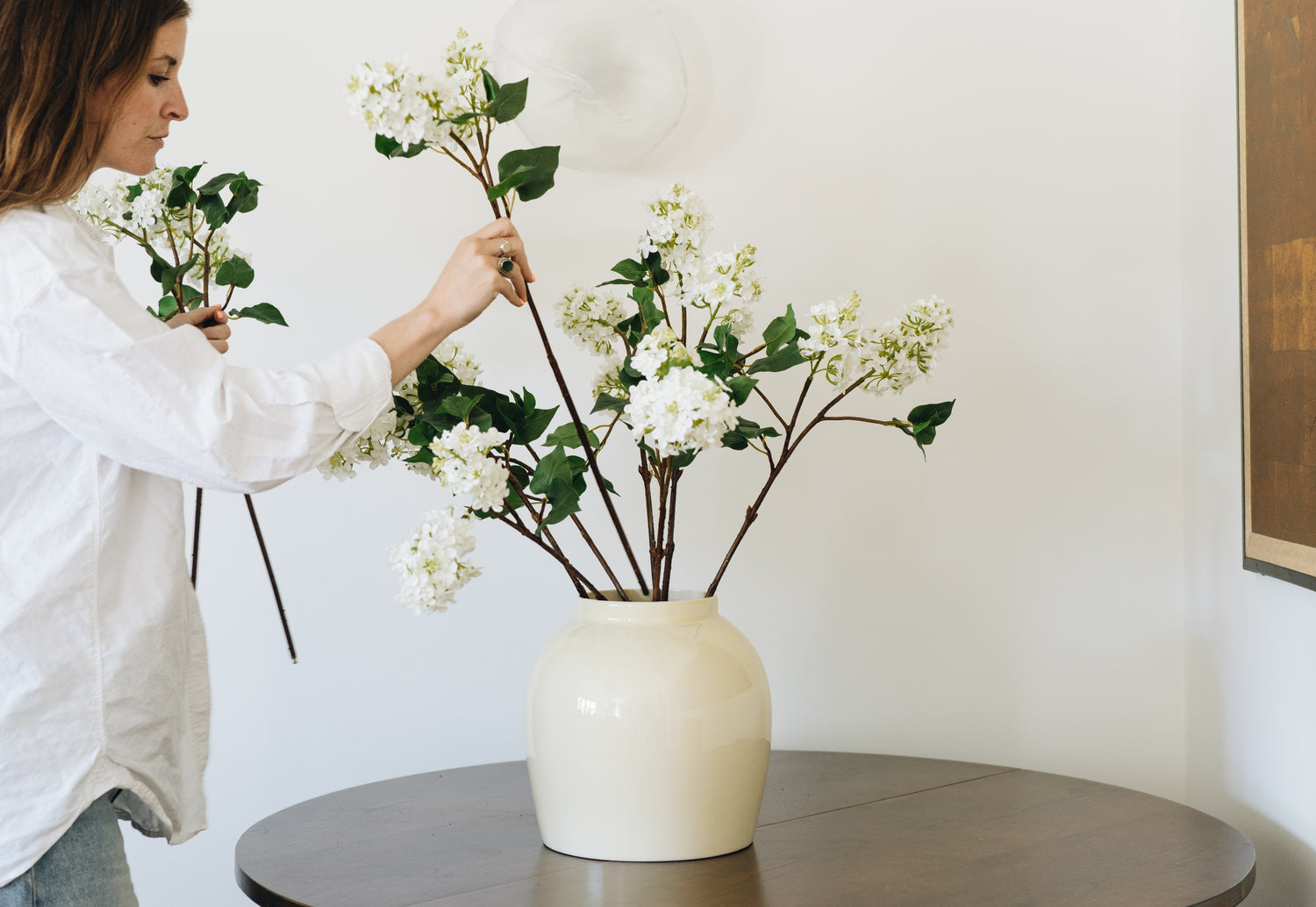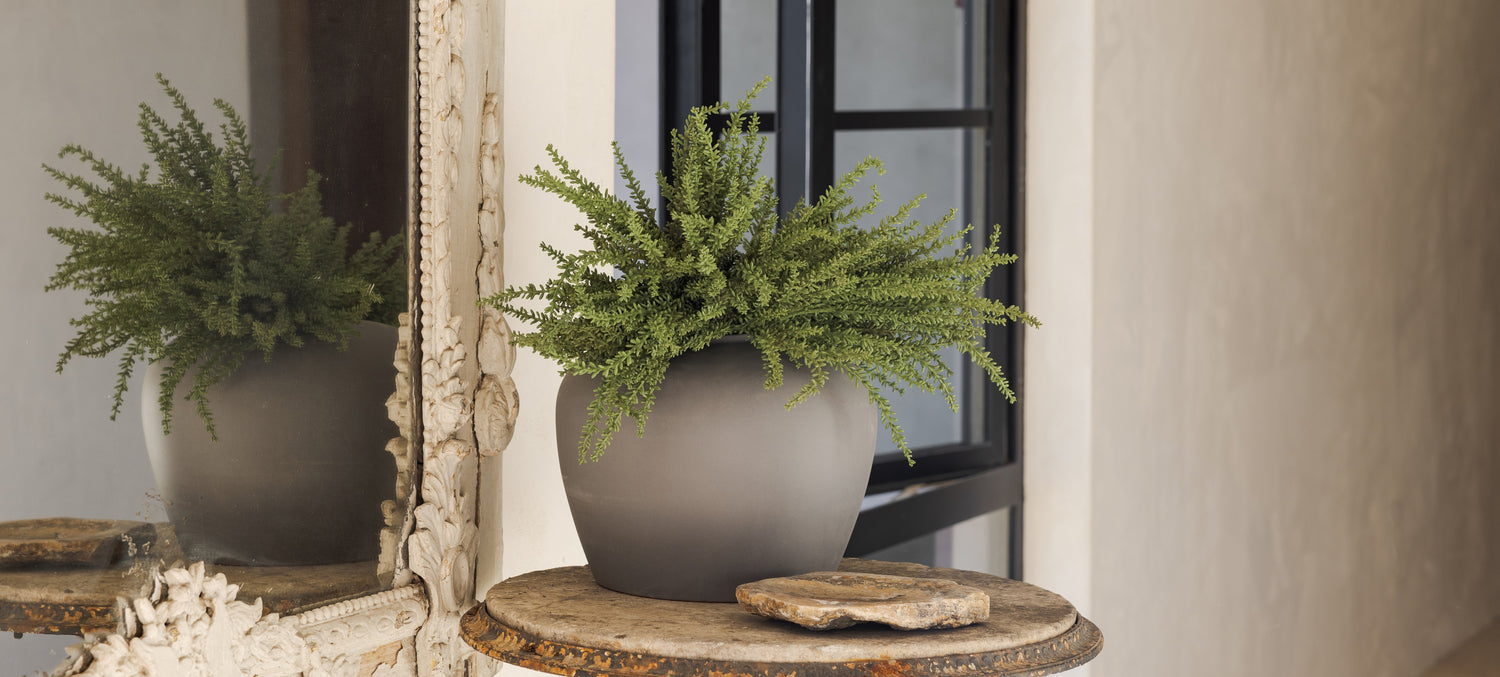Care for artificial flowers and dried flowers follows very simple steps. Many of us prefer to carefully clean our arrangements before storing, which is perfect when switching arrangements between seasons. With proper cleaning, you can prevent your faux flowers from fading and properly store your floral investment to last for years.
Whether you're an enthusiast creating a dried flower arrangement or looking to maintain the everlasting beauty of silk flowers, this guide provides insights on how to care for both.
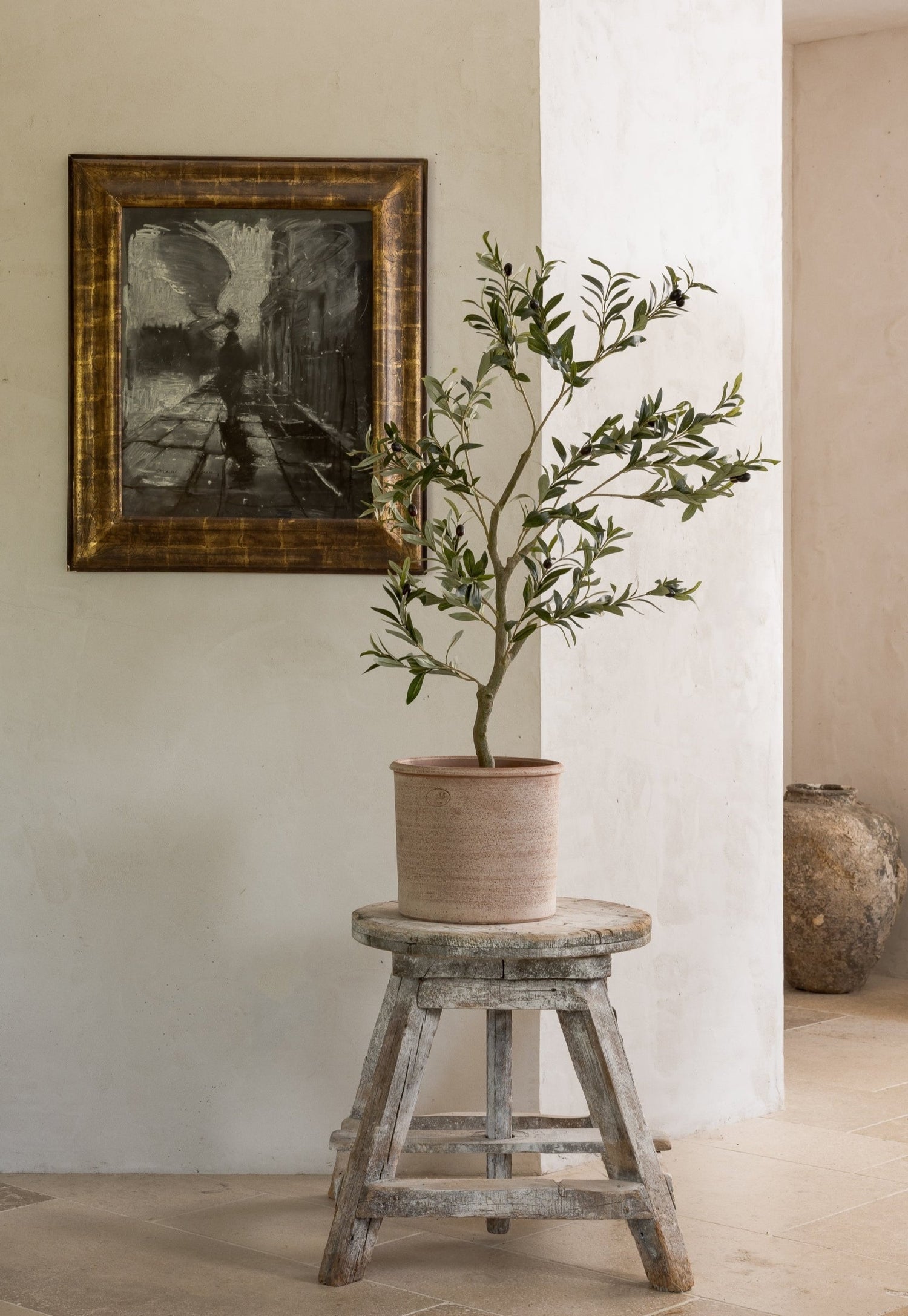
- Outside Care
- Artificial vs Dried
- Dried vs Preserved
Artificial Plants & Flowers
Dried Plants & Flowers
Protect Your Floral Investment
Whether you’ve chosen fake plants or dried plants, embracing permanent botanicals is a wonderful budget-friendly decor choice. Unlike their living counterparts, which demand a continuous investment in soil, fertilizers, and care, artificial plants present a singular upfront cost for the same lush charm of live greenery. The enduring allure of these faux greens only deepens their financial appeal, lasting for years without the need for replacements. Artificial plants gracefully persist, immune to many factors that challenge live plants. This prolonged lifespan, combined with the freedom from recurrent care expenses, positions artificial plants as a tasteful and economically savvy home decor option, ensuring perpetual aesthetic charm without the ongoing financial commitments of live plant care.
Can Fake Flowers Go Outside?
Some fake flowers are created to style outdoors. These outdoor artificial flowers are typically UV-treated and made from plastic and fabric. Do not use latex, foam, or Real Touch flowers outside as they will disintegrate. Look for the words "outdoor," "plastic," and "UV protected" in the product description. You may also ask what to spray on artificial flowers to keep from fading? We recommend spraying your outdoor artificial flowers with a UV-protectant spray you can find at your local art supply store.
Artificial Flowers vs Dried Flowers
Artificial flowers and dried flowers require distinct care. Know the key differences when it comes to protecting your arrangements.
- Origin: Artificial flowers are manufactured while dried flowers are organic.
- Maintenance: Artificial flowers can fade and distort, but are much more durable compared to dried flowers.
- Humidity: Neither artificial flowers nor dried flowers should be exposed to consistent humidity, but dried flowers are very susceptible to this damage.
- Lifespan: Dried flowers are not likely to last as long as artificial flowers due to their delicate nature. Artificial flowers are very reusable, durable, and hassle-free.
- Aesthetic: Dried flowers contain a special aesthetic, originating in nature with a sense of recycled life, however many artificial flowers appear more life-like when used in decor.
Dried Flowers vs Preserved Flowers
Understand the difference between dried and preserved flowers to help with unique plant maintenance.
- Drying Process: Dried flowers have all moisture removed, while preserved flowers undergo a rehydration process.
- Flexibility and Delicacy: Dried flowers are often more delicate due to the absence of moisture. Preserved flowers remain flexible and lifelike.
- Dyes: Both dried and preserved flowers can be dyed. Dyed preserved flowers use a vegetable-based glycerin formula.
- Bleeding and Preserving: Vegetable-based dyes or preservatives may bleed, but it's normal. Store in a dry area to minimize bleeding.
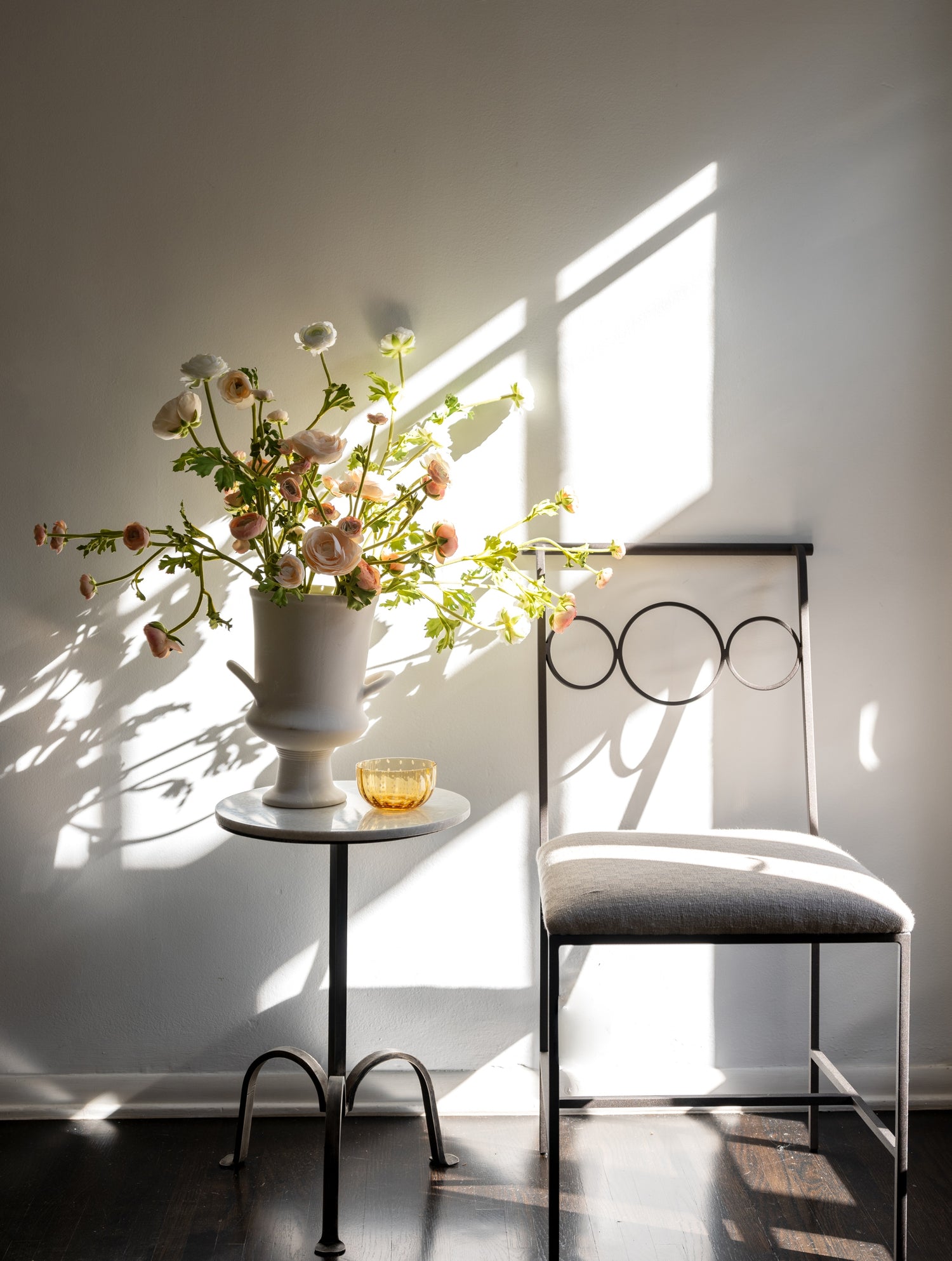
Daily Care for Artificial Flowers and Plants
Caring for your artificial flowers and plants is not nearly as time consuming as live plants. To keep these botanical arrangements appearing the same each day, follow our general tips.
- Keep Away from Direct Sunlight: Keep your artificial plants and flowers away from direct sunlight as this can cause color distortion unless they are coated for UV-protection.
- Dust Occasionally: If your artificial plants are in high-traffic areas of the home or in a room with a fireplace, they may need occasional dusting.
- Check for Damage: Check in on your artificial arrangements and watch for damage, such as a fallen leaf, bent petal, or out-of-place stem. Fixing minor damage is usually very quick, easy, and seamless.
Artificial plants, crafted from materials like silk, plastic, or synthetics, offer a low-maintenance alternative to live plants. Light, proper cleaning ensures these botanical recreations stay vibrant.
1. Dust with a Damp Cloth or Feather Duster
Begin the cleaning process by taking your artificial flowers and plants to an outdoor area. Gently dust the leaves and blooms with a damp cloth or a soft feather duster. This step effectively removes surface dust and debris that may accumulate over time, restoring the flowers' original luster. Take care to be gentle, especially with delicate or intricate designs, to avoid damaging petals and stems.
2. Use a Cool Hairdryer or Compressed Air for Intricate Spaces
For those hard-to-reach nooks and crannies or intricate spaces within your artificial floral arrangement, a hairdryer set to a cool setting or compressed air can be highly effective. The gentle breeze dislodges dust particles from intricate areas without causing any harm to the delicate structure of the flowers. Hold the hairdryer at a distance to prevent damage, and sweep across the arrangement.
3. Wipe with Soap and Water for Specific Types
Some artificial flowers, particularly those crafted with a combination of fabric and plastic, can benefit from a deeper cleaning using a mild soap and water solution. Dilute a small amount of soap in water and dampen a cloth or sponge. Gently wipe the surfaces of the flowers, paying attention to areas with visible stains or dirt. Be cautious not to saturate the flowers, especially if they contain latex or foam components. After wiping, allow the flowers to air dry completely.
When styling your flowers, you can choose a variety of vases and pots to create your own unique, life-like arrangements. Follow our tips to create true mimics of real flower arrangements.
1. Select Life-Like Flowers with Wire
Not all fake flowers are created equal. High-quality, botanically recreated fake flowers by Afloral will bring life to your arrangements. We recommend Real Touch florals for realistic petals and blooms that feel soft and almost damp to the touch. Read the product description to ensure the stem and, if possible, the petals are wired so you can manipulate and style the flower. Wired stems and blooms offer the most flexibility for you to mimic the organic styling of real flowers.
2. Shape and Fluff Petals, Blooms and Stems
Once your fake flowers are delivered, take them out of their packaging and fluff the leaves and petals. To fluff, simply bend and separate the bloom and leaves to create an organic look. We recommend searching online for images of the natural flower and styling your artificial flower to match. Shape the stem with a slight organic bend.
3. Bend and Place the Main Stem
Before cutting your artificial flowers, bend the end of the stem to your desired height. If you can bend the stem instead of cutting it, you can then reuse your stem in another design at another height. Bending is perfect for opaque vases. To ensure that the blooms are displayed prominently and aesthetically above the vase, visually estimate the height of the vase, and arrange the stems so that they extend above the vase by at least half of its height. A general rule of thumb is the vase should be 1/3 to 1/2 the size of your stems. For example, a 40" stem will look best in a 12" to 20" vase. This creates a pleasing composition that draws attention to the flowers while also showcasing the vase as a decorative element. These are just suggestions and have fun with your floral design! Use floral design tools such as hairpins, floral frogs, or grid taping to provide structure and help the flowers stand.
4. Cut with Wire Cutters
If you must cut your artificial flowers, use high-quality, heavy-duty wire cutters. If the stem is thick and you're having difficulty cutting the wire inside, try bending the stem back and forth several times. This movement should snap the wire where you've created an impression from the wire cutters.
5. Take Care with Water
Some artificial flower stylists enjoy displaying fake flowers in water to create a greater life-like effect. Depending on the type, some fake flowers can get wet. Ensure they are fabric and plastic, not latex or foam, before showering or submerging them. Latex or foam blooms and leaves will disintegrate in water. Do not get Real Touch flowers wet. If you style your cut stems in water, seal the open end with hot glue so the wire does not rust.
Proper storage is crucial to preserving the beauty and structure of artificial plants and flowers. This step ensures they maintain their lifelike allure over the years. Consider the following tips during periods of non-use to keep your artificial greenery in pristine condition.
1. Choose the Right Container
Select sealed containers when storing artificial plants and flowers. Plastic bins with snap-on lids or sealed cardboard boxes are excellent choices. These containers provide protection from dust and other elements. Many choose to store artificial plants in plastic bags as this option can accommodate a variety of plant shapes and sizes. Ensure each bloom has sufficient space to prevent flattening or distortion during storage, especially if not stored in a solid container.
2. Temperature Control
Artificial plants and flowers are sensitive to extreme temperatures. Avoid storing them in areas prone to temperature fluctuations, such as attics, as these environments can lead to warping and discoloration. Instead, select a storage space with a consistent temperature, such as a hallway closet. Ideally, room temperature is optimal for maintaining the integrity of the materials.
3. Avoid Direct Sunlight
Exposure to direct sunlight can cause fading and deterioration of artificial flowers and plants. When storing, choose a location away from windows or other sources of intense sunlight. UV rays can accelerate the degradation of materials, leading to color loss and a diminished aesthetic. To further protect against sun-induced damage, consider using a UV-protectant spray, especially for artificial flowers intended for outdoor use.
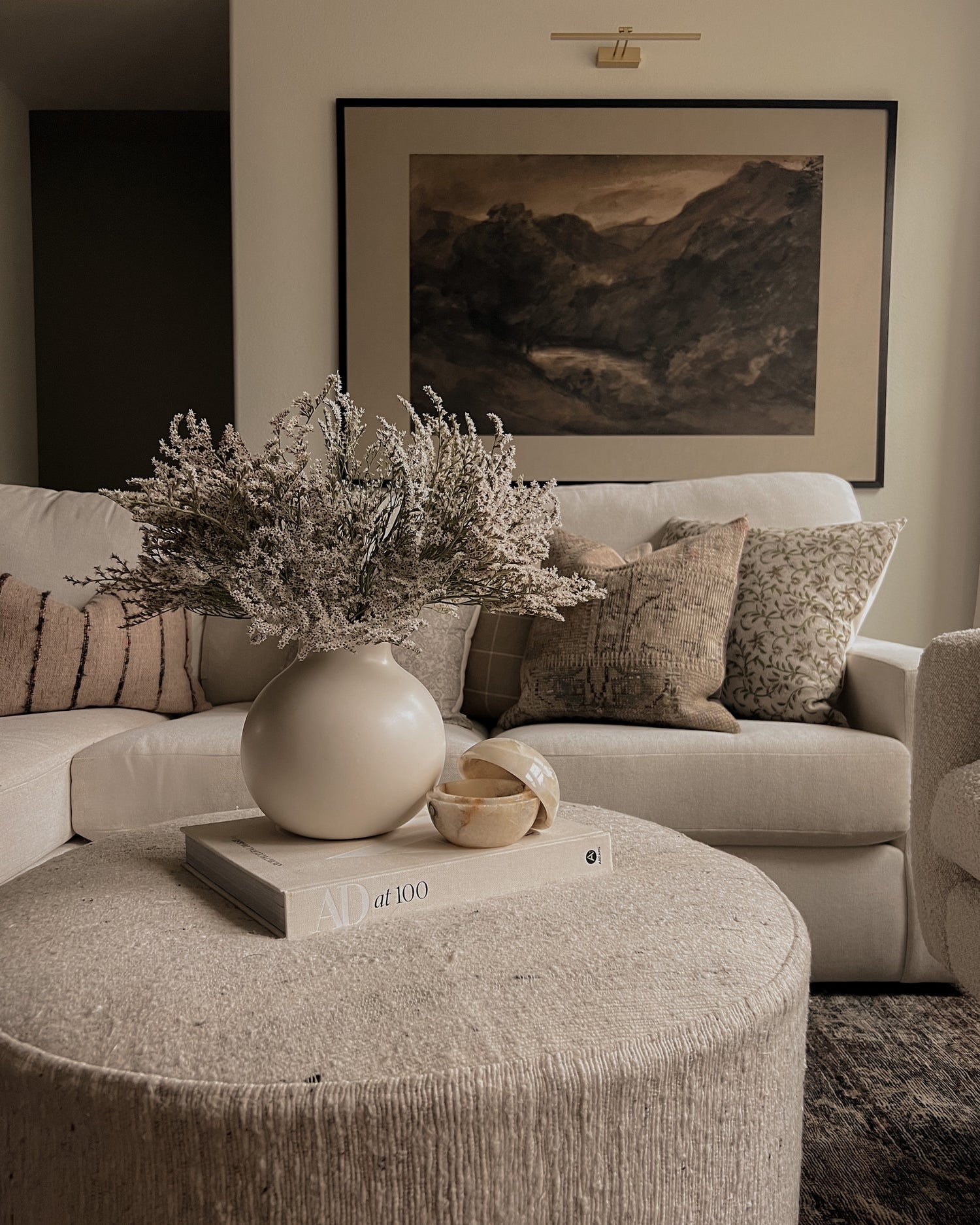
Daily Care for Dried Flowers and Preserved Grasses
Dried flowers and preserved grasses add a touch of timeless beauty to any space, but unlike artificial plants, require a bit more daily care. Proper care ensures they maintain their vibrancy for years.
- Avoid Humidity and Water: Keep dried or preserved stems in a dry vase, ensuring they have space to breathe. Avoid placing them in water or humid areas. If colors begin to leak, dry the florals in a cool, dry place.
- Protect from Sunlight: Place arrangements in a shaded area to prevent fading. Consider a UV protectant spray for added safeguarding against harsh light.
- Gentle Handling: These delicate florals should be kept away from high-traffic spaces, particularly from small hands and pets.
Dried flowers and preserved grasses can be gently cleaned. As this decor option ages, it will become more fragile. Be sure to care consistently for dried flowers and grasses to ensure they last their full lifespan.
1. Carefully Dust
While gently holding your dried flowers and preserved grasses, use canned air dusters or a low-heat hair dryer from a distance to remove dust. Methodically pass over the dried flower for only a moment in each location. The low-heat setting should not damage your dried plants while helping remove humidity during dusting. If you find persistent dust on your dried plants, wipe gently with a cloth or feather duster, but only wipe with water on sturdy types of leaves.
2. Choose Your Container
We recommend storing dried plants in a breathable, sealed container away from humidity. Consider using bags if you live in a tropical climate to lock-out humidity. Cedar closet blocks can add a touch of freshness when storing dried plants long-term.
3. Keep in Dark, Dry, Consistent Temperatures
Dried plants are susceptible to color fading when exposed to humidity, natural light and extreme temperatures. Choose a location in your home that is indoors and part of your home’s temperature control. If you find the basement is the most convenient place to store your dried botanicals, consider using a dehumidifier to help them last.
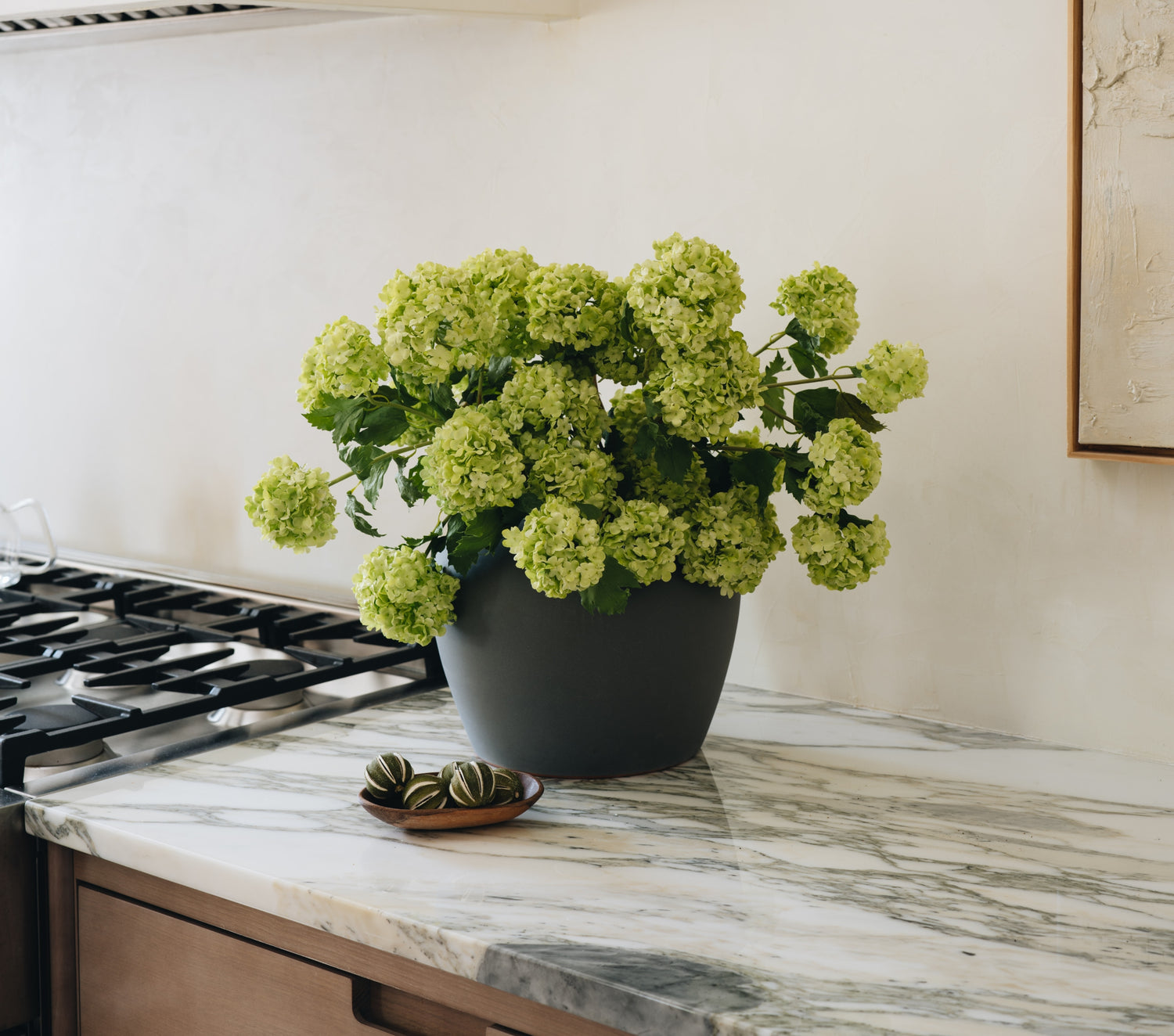
Afloral Artificial & Dried Flowers
We offer a wide range of artificial plants, silk flowers, dried flowers, preserved grasses, and faux botanical arrangements. No matter your home decor style, you’re sure to find the perfect fit with Afloral.
Do you have questions about caring for your floral arrangements? We’re here to help support your artificial greenery. Contact us for unique assistance.


